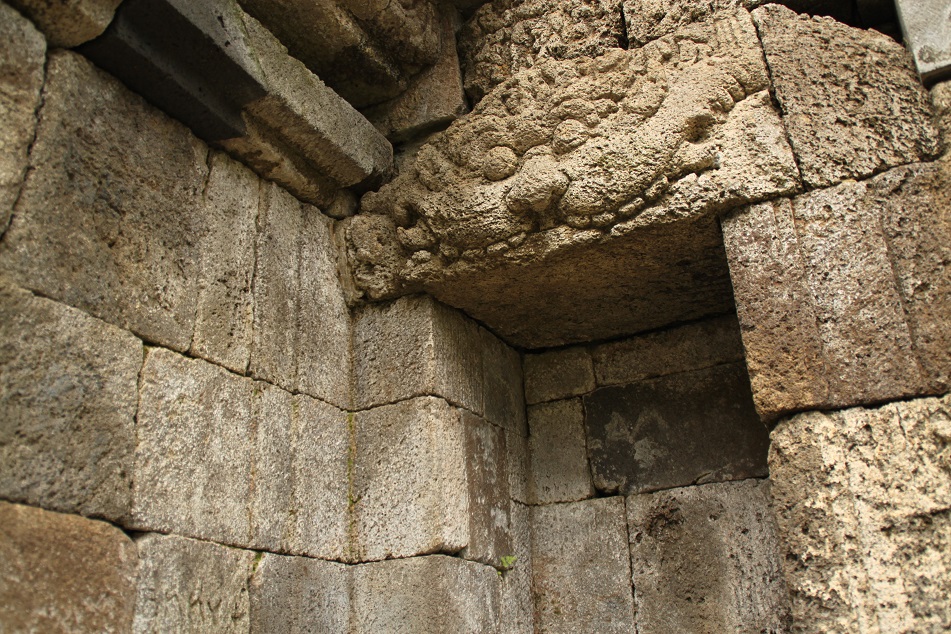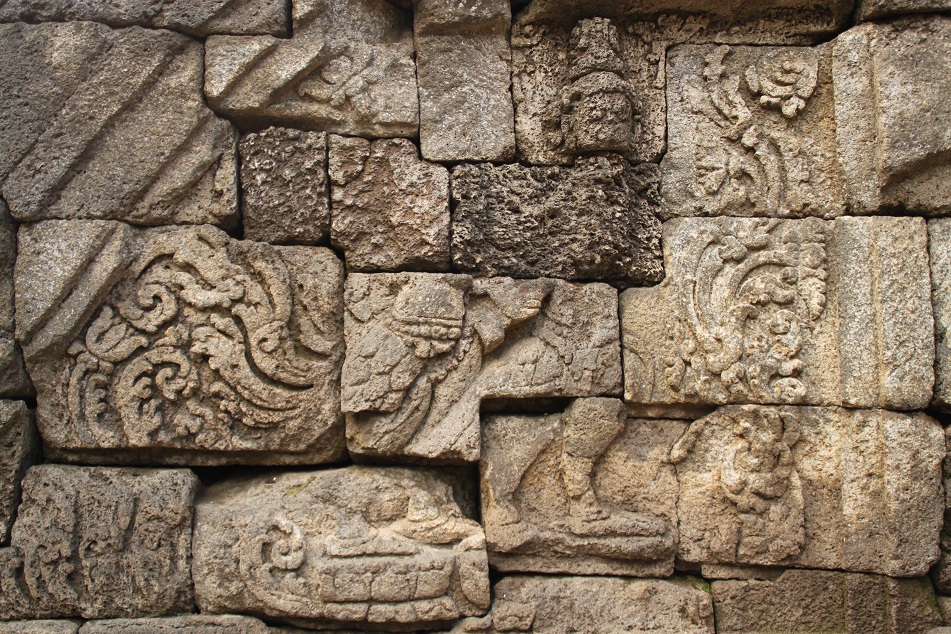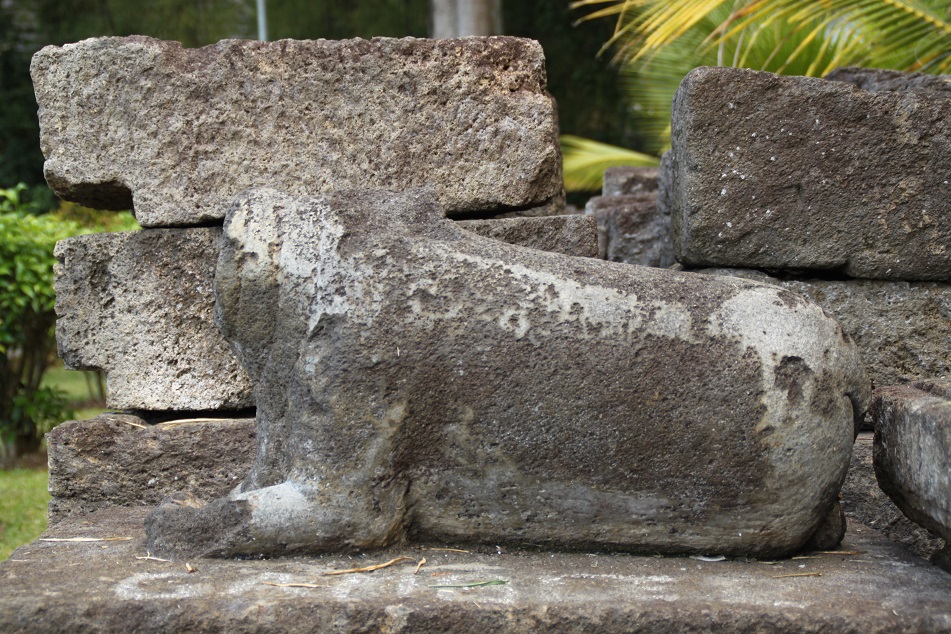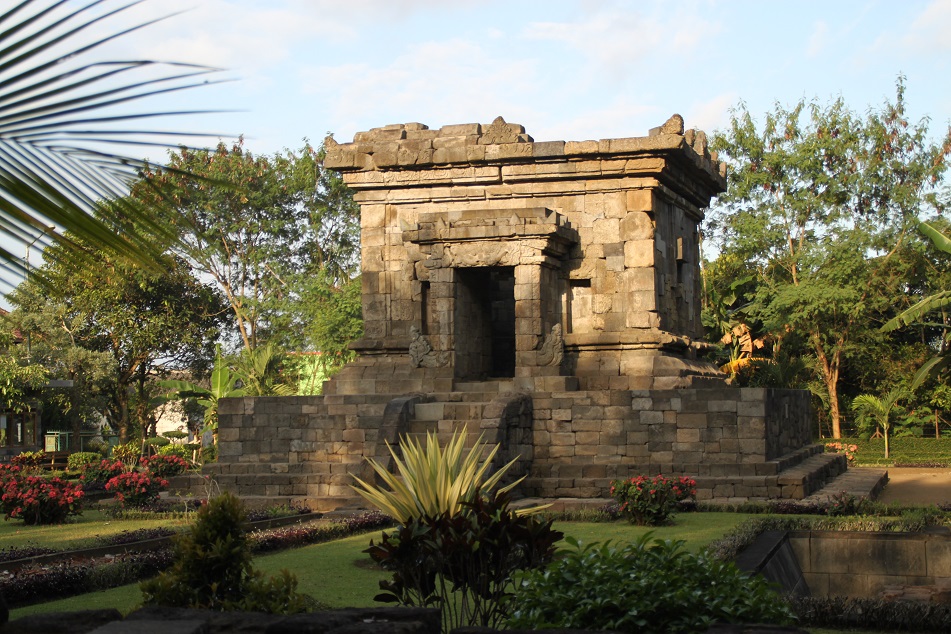In the eighth century, several centuries after Hinduism arrived in Java, the fertile island where towering volcanoes took lives but replenished the soil saw the beginning of temple construction in earnest. The central part of Java in particular witnessed the proliferation of Hindu and Buddhist temples. Many were modest in size, but some were constructed on an unprecedented scale. As the most powerful kingdom on the island at that time, Medang was responsible for the building spree, a telltale sign of the thriving religions that had taken root far from the land where they were born.
However, what happened on the eastern side of the island around the same time was more obscure until the discovery of the Dinoyo inscription which shed light on a kingdom called Kanjuruhan. Centered around modern-day Malang (East Java’s second largest city), Kanjuruhan was ruled by a wise king called Dewasingha (Devasimha). His son, Liswa, succeeded him and took the title Gajayanalingga Jagatnata, or better known as Gajayana, and then had a daughter called Uttejana. A Hindu temple dedicated to Agastya, a resi (rishi) or revered sage in Tamil Hindu tradition – suggestive of the past connections between the Javanese and the Tamils from southern India – was built at the heart of the kingdom. Today it’s better known as Candi Badut.
Despite its construction very far from what was considered the center of classical Javanese art in the capital of Medang, Candi Badut bears a striking resemblance to Central Javanese temples. Its bulky structure is an oddity compared to typically tall and slender Hindu temples built across eastern Java centuries later. Kanjuruhan in fact fell under the control of Medang, albeit peacefully as the kings of the East Javanese kingdom were still allowed to rule their people directly. As a friendly gesture, Kanjuruhan donated a small perwara (satellite) temple within the expansive Shivagrha compound, or modern-day Prambanan.
After the demise of Java’s Hindu-Buddhist kingdoms, which resulted in the abandonment of Hindu temples all over the island, the once beautifully adorned shrines were gradually reclaimed by nature – covered in volcanic ash, destroyed by earthquakes, or slowly broken down by thick overgrowth. Candi Badut itself was only rediscovered in 1923 and reconstructed a few years later. The lack of original stones, as suggested from the missing upper structure above the temple’s sanctum, means a complete restoration is virtually impossible. At least for now, the lingga and yoni pair, a statuette of Durga Mahisasuramardini (the multi-armed goddess Durga slaying the buffalo demon Mahisasura), and a headless Nandi (the mount of Shiva) are all suggestive of the temple’s Shaivist nature – and the belief practiced by the people in Kanjuruhan more than 12 centuries ago. Candi Badut might be incomplete, but it is still an invaluable treasure that provides us with a glimpse of the little-known kingdom of Kanjuruhan.










Candi Badut was a wonderful hidden gem – and a great introduction to the temples we would visit around Malang in the ensuing days. It really reminded me of some of the smaller archaeological sites we explored on previous trips to Central Java. I’m glad Debbie gave you an insider’s tip and clued you in to the existence of Candi Badut. Neither of us would have thought to go there otherwise!
LikeLike
Indeed, had Debbie not mentioned about Candi Badut when I was asking her a lot of questions about Malang, we would have missed this small but intriguing temple altogether. If only the weather during our stay in the city was a lot more like that afternoon when we went to Candi Badut! You know, despite Kanjuruhan’s little known history, Malang’s main stadium was named after the kingdom and the train that serves Jakarta-Malang route is called Gajayana! Maybe next time I should look up other trains’ names and explore the places with historical connections to those names.
LikeLiked by 1 person
How incredible! Thanks v much for sharing!
LikeLike
And thanks for reading, Sophie!
LikeLiked by 1 person
Very informative. Keep it coming.
LikeLike
Thanks Jeanny! I’m glad a blogger friend who lives in Malang told me to visit this temple. It’s small but for sure it’s fascinating!
LikeLike
Fascinating information and photos. The reconstruction is wonderfully done. Thank you again.
LikeLike
With whatever left they could find, those people who restored this small temple did a good job, indeed. Even to this day ancient temples which for centuries were buried in volcanic ash and layers of soil are still discovered on the island of Java. The knowledge and skill to reconstruct ancient temples will certainly be in demand for many years to come. Thanks for reading!
LikeLike
Beautiful post Bama!
A wonderful 2018 to you & your loved ones!
LikeLike
Thanks Suwandi! Happy New Year to you too! May 2018 bring more happiness to you and your loved ones.
LikeLike
Such a lovely structure. I’m always amazed at what humans could do with stone and what nature can do to humans. I’m wondering if anyone, or you, know what caused the “demise of Java’s Hindu-Buddhist kingdoms”? When I visited Borobudur, they seemed not to know what caused the abandonment. I’m wondering if it was other humans, or nature.
LikeLike
The same amazement led me to all those ancient ruins across Asia, although in my case the wishlist only grows longer after every single trip. To answer your question, what I understand is the lack of surviving inscriptions — due to damage caused by nature or human — only provides us with patchy history of ancient Java. Generally it is believed that volcanic eruptions, earthquakes and conflicts resulted in the gradual shift of the center of power on the island from the central part of Java (where Borobudur and Prambanan are located) to the east. However, Hinduism survived as the dominant religion on Java until the 15th century when powerful Islamic sultanates rose to prominence. I wonder if years from now more and more inscriptions will be discovered to shed more light on the history of Java.
LikeLiked by 1 person
Got it…and yeah, gotta keep going on to the next ruin
LikeLiked by 1 person
What a beautiful temple! I am ever fascinated by the rise and fall of ancient kingdoms Bama, and you always have the best stories.
Wishing you a fabulous new year filled with many fulfilling journeys!
LikeLike
I’m inspired by people like you and James to write about the stories of ancient sites in my own backyard. However, I do dream of going back to India one day to explore more centuries-old temples adorned with exquisite reliefs and statues — lucky you don’t have earthquake which is one of the main culprits that caused damage to ancient temples here in Java.
Happy New Year to you too, Madhu! Wishing you memorable travels to Sri Lanka (finally!), Canada, and beyond!
LikeLike
Sri Lanka was way, way overdue 🙂
LikeLiked by 1 person
What a wonderful place!
LikeLike
It’s a small but fascinating ancient temple, indeed. Thanks for reading, Debra!
LikeLike
Although it’s obviously very sad when these treasures get swallowed up by the earth and draped in vines and other growth, they do make for some very atmospheric sights! It looks like Candi Badut has been well reclaimed and restored, though.
LikeLike
That’s so true, Lex, and there’s no other ancient temple more fitting to your description than Cambodia’s Ta Prohm. I read that many temples used to be painted in bright colors, but I actually prefer them to look like how they do today — their material exposed, revealing the real color of the stone.
LikeLiked by 1 person
Beautiful photos as usual.
Can I get an authograph? 😜
LikeLike
Much appreciated, Kate! I believe you can get Autograph at Marks & Spencer’s outlets. 😀 😛
LikeLike
Wow, amazing and nice picts! I know this temple but no yet going there!
LikeLike
Thanks! Candi Badut really isn’t that far from the city center of Malang, so it shouldn’t be too much of a hassle to visit this ancient temple.
LikeLike
Alright! 👍
LikeLike
Sound like a great place to visit! Will add it to my wishlist 😍
LikeLike
I would recommend Borobudur and Prambanan for your first visit to Indonesia, although if you do have ample time in the country going to Malang to visit this small temple (and more ornately-decorated ones which I will write about soon) will be great! Thanks for dropping by!
LikeLiked by 1 person
Beautiful photos and I love the tour of history you give as well. 🙂
LikeLike
Thanks Paige! Glad you enjoyed this post.
LikeLike
Bama I found the intricate carvings fascinating. So well preserved and perhaps a bit of a diverse look from the bulky structure. It seems Indonesia is filled with gems to discover. We certainly hope to do so one day.
LikeLike
Maybe on your second cycling trip to Southeast Asia! There are dozens of exquisite ancient temples (and other fascinating natural and historical sites) for you to discover along the way.
LikeLike
I cam to Siem Reap to visit the Angkor temples and was amazed at the scale, the beauty and sophistication of all those. I hope and plan to visit Indonesia soon. The world has so much to teach about history, civilizations and humanity.
LikeLike
If you enjoy ancient temples, I think you would like Indonesia. I must say Angkor Wat is larger than any temple here, but Borobudur, Prambanan, Sewu, and Penataran are no less impressive and fascinating. I wrote about some of those temples in Chapter 1, Part 5 – 11 of the Spice Odyssey series (link here: https://harindabama.com/resources/the-spice-odyssey/), in case you’re interested in finding out more. Sure we can learn so many things from visiting places like these.
LikeLike
Fantastic! I’m always impressed by the discoveries and rediscoveries that make it possible for people now to study and figure out the history of so long ago. It really is quite amazing.
LikeLike
And what is more fascinating is the fact that even today more and more ancient ruins are being unearthed in Java alone! One particular site in East Java has been very intriguing to me as it contains some unusual statues/temple parts. I can’t wait to see what else will be found there!
LikeLike
Greetings from India ! To Mr Bama and Indonesians: Best Wishes for Health, Happiness and Prosperity.
Never heard about Kanjuruhan Hindu Kingdom till now. The photos and description look interesting. This temple looks similar to indian ones but the later South East Asian temples have influences from the country they are built in. Im from kerala which is close to Mysuru in South India . Mysuru apparently gets its name from the demon Mahisasura , that you wrote about. Its a peaceful cultural city now, though
LikeLiked by 1 person
Hi! You are correct to say that ancient Hindu temples in Southeast Asia, especially those built in the late Classical Period, usually incorporated Indian elements and local influences in their architecture. I didn’t know that the name Mysuru was derived from Mahisasura! That’s an interesting fact. Thank you for sharing this information with us.
LikeLike